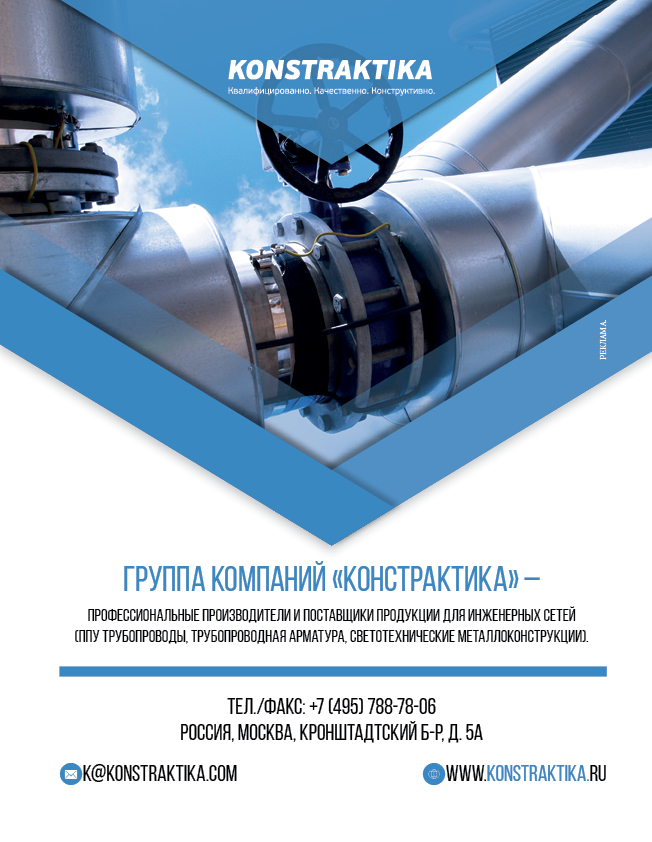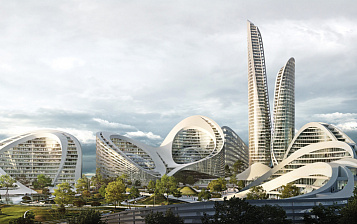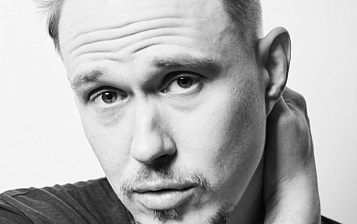Experts note that any global crisis is not only a test, but also a chance to rebuild the world for the better - after its completion. The Great Depression in the United States - led to the emergence of a welfare state and to great construction projects. After the devastating Patriotic War, in the USSR they began to massively build housing and humanize politics. After September 11, we began to live in a safer world, where terrorist attacks like Lockerbie are impossible, and the chances of an ordinary citizen not to be undermined along the way have increased significantly. What the world will be like after the coronavirus, we, of course, do not yet know. Various hypotheses are being built: from a significant decline in the global economy and archaization, to a new technological breakthrough. Maxim Kirsanov, a special correspondent for Gorproekt magazine, talked to experts from the world of construction and urban studies to understand how the world we live in will change at the most immediate level: cities, districts, and, as a result, a roof over the head of an ordinary citizen.
What should a hospital be like in an era of epidemics?
It would seem that the issue is too specific and it should be decided by virologists (even if now they have become all of them - as President V. Putin aptly put it). However, a review of the topic by the end of April leads to surprising discoveries. We have analyzed more than a hundred media publications, where the topic of "building hospitals" runs like a red thread. Even glamorous tabloids report how Donatella and Allegra Versace donated 500,000 euros to the intensive care unit of Milan's San Raffaele hospital, while their competitors Prada donated three times as much for three hospitals. However, even a simple look at such key points in the struggle of Italy as the Ospedale Luigi Sacco hospital (founded in 1927) or Vittore Buzzi (more than half a century old) shows how they do not look like a giant and only last year completely an open complex in Kommunarka, which, after the visit by the president, became a symbol of the Russian fight against the epidemic). On the one hand, we have old Italian complexes 10 minutes from the center (which simplifies the delivery of patients), where buildings are only being completed or repaired, on the other hand, an ultramodern “remake” built from scratch in New Moscow, extremely far not only from the center – from any historical boundaries of the city.
But the special position of the City Clinical Hospital No. 40 in Kommunarka is more likely the result of a combination of circumstances (although it also gave rise to the famous “ambulance queues”). New Moscow has been under construction for less than 10 years, and all the key facilities in it are being built with a margin, which turned out to be in demand. A completely different matter is hospitals built in the midst of an epidemic. If in March the Russian authorities announced that they would build a rapidly erected mobile facility between the settlements of Golokhvastovo and Voronovskoye on Kaluzhskoye Highway, then on April 20 they solemnly opened a full-fledged clinical hospital for 900 beds with dormitories for more than 1000 doctors and employees, and with another 30 capital facilities . Specialists of the PSK Group of Companies, who supplied materials for this shock construction site, which lasted only a month, testify that monolithic concrete foundations, communication lines, precast concrete walls and modern insulating and finishing materials fully comply with the construction standards for facilities for permanent comfort class living. This was confirmed by Mars Gazizullin, General Director of JSC Mosinzhproekt, and Vice Mayor of Moscow Andrey Bochkarev. They reported that the quality of the hospital would not be inferior to similar facilities "under construction in half a year." Third-party experts interviewed by us, for example, the well-known military doctor Alexei Vodovozov, draws attention to the fact that the "Infection Center" in New Moscow is a full-fledged multidisciplinary inpatient hospital. It was built a little slower than the famous 10-day corps in Wuhan. But in China, just temporary box-cars were shock-assembled, externally tied with engineering systems, in contrast to the solid Russian competitor with an area of 80,000 sq.m.
But we differ not only from China, which in general bears little resemblance to anyone else. Let's look at the palette of Western countries. While in Moscow doctors are accommodated in VIP hotels, in Milan patients were settled in hotels around the Central Station. We have already written about the strange hospitals of the capital of Lombardy. The Russian media mistakenly reported on the "construction" of the San Raffaele hospital, but this large university hospital at the research institute has been operating since 1969 (and in the 1990s and 2000s it was recognized as one of the best in Italy), in which work was carried out to increase the department intensive care. And in the end, the bulk of the extra beds were made using prefabricated structures, and the collected donations went to the equipment and salaries of doctors. Of course, new hospitals of a temporary nature were also created. One of them was the pavilion of the Milan fair Fiera Milano City, with an area of approximately 12,000 square meters, which was transformed into an intensive care unit for 500 people. Similar decisions were made in Spain, where in the center of Madrid, which again helped to reduce travel time for ambulances, the IFEMA exhibition complex (another analogue of our Crocus Expo) was refurbished, which can now accommodate up to 5,000 patients. The northern neighbors of European southerners acted similarly. Germany turned into a hospital for up to 1000 patients, the Berlin Messe exhibition area in the Charlottenburg-Wilmersdorf district (the center of West Berlin). Reading these lists, one cannot get rid of the thought that if the president of the Crocus Group, Araz Agalarov, had reached an agreement with the Russian authorities in time, he would not have to compare his business with a sinking ship. Below we will show whether he had such an opportunity. Concluding the topic of building medical infrastructure, we can say that Europe and America also had enough exotics: stadiums in Brazil, a central park and tennis courts in New York, NHL stadiums in Canada, a concert hall in Rotterdam, a cruise ship in Genoa, a helicopter carrier " Le Tonnerre" and high-speed train in France. The list can be continued for a long time, but all these facilities have a lot in common - not only are they temporary, but they are not located in an open field, but fundamentally in the center, in facilities with the most convenient transport accessibility, so that patients quickly get to doctors, and teams " ambulances" did not go crazy.
Why did Russia, whose authorities are so fond of referring to international experience (including in the case of quarantine), take a radically different path here? Why, instead of investing in the purchase of equipment and salaries for doctors, capital construction was suddenly started in an open field far from the city? Why don’t even the military in Russia set up tent camps, but for 8.8 billion rubles they are building 16 infection centers similar to those in Moscow across the country? Just because Russians don't know how to build badly?
The answer becomes clear when you look at the context of Russian healthcare. It has indeed been associated with a lot of news in recent years. Started in the 2010s the reform of medicine by the method of "enlargement" and optimization of the industry has borne fruit. Number of hospitals in Russia from 2000 to 2020 decreased by half - from 10.7 thousand to 5.4 thousand. They became larger, many small outsiders were simply demolished and given over to commercial development (especially in the center of Moscow). But the surviving "lucky ones" became better equipped, in many cases received tomographs and modern ventilation and heating systems, which made it possible to carry out more complex operations. Opinions were divided. During the reform process, people as diverse as the liberal Yulia Latynina and the statesman Alexander Myasnikov (the current head of the Information Center on the Virus Situation) advocated for it - both cited Western experience, including hospitals in Milan and New York. People like Ella Pamfilova and the Minister of Health in 2012-2020 spoke about the complete failure of the reform. Veronika Skvortsova, who has repeatedly stated about the shortage of doctors in the country. But the criticism of the reform from Deputy Prime Minister Tatyana Golikova, who in the fall of 2019 announced the failure of the reform and a sharp drop in the quality of services to the population, became the most high-profile. The fact that the reform is far from complete was recognized last winter by the president himself, who agreed that the Botkin hospital, the largest in St. Petersburg, was in a terrible state. Meanwhile, queues for surgeries were growing in Moscow and across the country, and tabloids, such as the infamous BAZA, ridiculed the medical innovation clusters that had moved into the buildings of some former infectious disease clinics. It is difficult to object to the pathos of critics of such institutions as the Mosmedpark technopark, which has now occupied the area of the third infectious diseases hospital on Kuryanovskaya Street (with 420 beds!), It is difficult to object. But now we understand why, at the height of the epidemic in Russia, there are such investments in capital construction - the authorities had a reason to correct some of their own shortcomings of past years, at least in the area of the number of beds. As well-known political scientist Ekaterina Shulman put it on this occasion: “The virus, like the Patriotic War, forces our authorities to do at least something close to reality.” But the question is, is it possible to defeat epidemics with constantly mutating viruses and other threats without investing in our own medical science? Fortunately, in Russia there is already a definitely successful experience in this industry, which is also related to construction.
Innovation as a way to invest in the future
An interesting coincidence: one of the most active speakers during the epidemic, along with Putin and Sobyanin, was former Prime Minister Medvedev. It was on the territory of the New Moscow he created that the main arena of the fight against coronavirus unfolded. And it is Skolkovo, which he created, that at the end of April supplies the freshly built infectious diseases building with modern equipment. They say that any technology startup should have time to build up. The active involvement of the Skolkovo Medical Cluster in the fight against coronavirus shows that perhaps the time of the beloved brainchild of the third president of Russia has come. Of course, like the hospital in Kommunarka, activity in this area increased gradually year after year. In the fall of 2018, a full-fledged Israeli hospital "Hadassah Medical" was opened in Russia for the first time, which in a short time became one of the most visited Skolkovo facilities. The successful experience of his work, as well as other clinics and biomedical startups in the territory of the medical cluster, stimulated the construction of new facilities.
The largest of them is the future therapeutic building of more than 20 thousand square meters, which is close to completion with the use of modern technological solutions and PromStroyKontrakt formwork. At the end of 2020, the most modern rehabilitation center in the country will be equipped with equipment, which is especially important in the event of a protracted epidemic. It is expected that the clinic will receive about 3.5 thousand people a year soon after the completion of construction, but the main thing is that it will become another platform for developing the most advanced ways to overcome the consequences of the coronavirus, often associated with complications even after recovery. Hard work on a complex project, sometimes even in difficult Russian conditions, gives a result. If Skolkovo, which has been repeatedly criticized, succeeded, then the next generation of startups, for example, the Science Park of Moscow State University and many other projects, which, thanks to the emergency, have become the most important elements of the infrastructure of Russian medicine in the coming decade, will probably succeed. According to our sources from their construction sites, the pace of work on new scientific facilities in Russia, from INION being revived in a matter of months to regional medical centers, does not stop even during a general quarantine, only slightly inferior in speed to the construction of roads (the direction of development of which has suddenly become vital for thousands of ambulance passengers).
Urbanism in the era of self-isolation
“To whom is war, and to whom is mother dear,” one could joke when reading reviews of the growth of high-tech start-ups (already many times overtaking oil companies on world exchanges), if the situation were not so serious. However, futurologist experts (for example, the already mentioned Ekaterina Shulman, or Oleg Kashin, who is experiencing isolation in London) warn that we will still remember the time of quarantine as calm and essentially happy for the majority of the population. The real problems threaten to unfold after. There are so many negative prophecies that even a brief overview of them is impossible. Let's just try to briefly answer the question - is the "urbanism" of the 2010s dead, with happy couples on the benches, with cyclists and noisy companies in the "new urban spaces". Some experts, for example, the sociologist Konstantin Gaase, predicted the death of this phenomenon in the fall (the crisis often only emphasizes existing trends!). But there are also more positive views. One of the most influential Russian architectural critics, Strelka Design Bureau partner G. Revzin believes that although the Comfortable Urban Environment project is likely to be frozen as a result of the crisis, the development of urban spaces will continue. It is easier to make safety regulations for park visitors than for passengers of a standard elevator in a 20-story building (alas, the renovation has not changed much here). Moreover, the death of a large part of the creative class will not stop, in his opinion, the further humanization of industrial zones. Indeed, the lack of money for their own offices and the fatigue of being at home will drive people to co-working spaces. The main thing is to demolish the endless factories around them, Grigory Revzin notes.
The first examples of post-epidemic architecture are waiting for us soon. In Moscow, taking into account the increased attention to safety, competitions are being held for new metro stations (proven their vital importance after the multiple increase in traffic in Kommunarka). In September, the winner of the Tuchkov Buyan park extended for the concept, the St. Petersburg answer to Zaryadye, will be announced. It will obviously be built with an eye to possible new epidemics. And the European bureau Precht has already designed a park for Vienna, where you can walk with social distancing, and after quarantine, enjoy the loneliness that many will probably fall in love with. After all, the existence of millions of reclusive hikkimori in Japan does not prevent them from building the cities of the future. We will cope, too, especially the construction of vital facilities, with the blessing of President Putin, has received a great incentive not to stop.

 DOWNLOAD
DOWNLOAD LOOK
LOOK
 Top Content of the Month
Top Content of the Month


